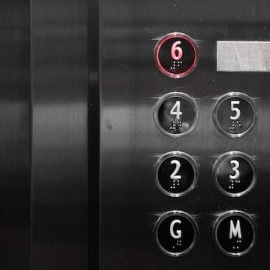

This article is an excerpt from the Shortform book guide to "Why Does He Do That?" by Lundy Bancroft. Shortform has the world's best summaries and analyses of books you should be reading.
Like this article? Sign up for a free trial here.
Are you a victim of abuse? How do you stop abuse?
In Why Does He Do That?, Bancroft’s explanations for abusive thinking help account for why abuse is hard to prevent: Most abusers don’t want to stop being abusive. Stopping means losing all the benefits that he gains from being abusive, but there is a way for you to get out of an abusive relationship.
Continue reading to find out how to stop abuse.
How to Fight Abuse
To learn how to stop abuse, abusers must take responsibility for the harm he’s done and resolve to treat others with more empathy and understanding. This means coping with feelings of guilt and potentially accepting the loss of a relationship, marriage, or contact with his children.
Because changing is such a difficult and initially unrewarding process, with many abusers being unable to grasp how treating their partners better might be healthier for their own emotional fulfillment in the long run, abuser programs often fail outright. Bancroft admits that many of his clients made no attempt to change, backslid as the work became increasingly difficult or they failed to convince their victims to take them back, or feigned changed behavior just long enough to finish the program, at which point they resumed being abusive.
Ultimately, abuser programs are similar to addiction programs in that they can only help a person who wants to be helped. No one can force an abuser to change, and Bancroft warns readers that it’s often better and safer for them to leave an abusive partner than to wait around in the hope of the relationship improving.
Despite these difficulties, Bancroft believes that abuser programs can be enormously helpful in combating abuse, less for “fixing” all abusers than for the education and services they offer to victims. He, therefore, argues that for an abuser program to be successful, it must put the victim and her needs first, hold the abuser accountable, and address the cultural attitudes underlying abuse.
1. Put the Victim First
Bancroft considers his work as a counselor to have been primarily for the benefit of victims, even as he had more day-to-day contact with abusers. The ultimate goal of anti-abuse programs is to stop the abuse from happening, and if changing the abuser is impossible, Bancroft considers it the duty of counselors and legal authorities to provide the victim with everything she needs to safely exit the relationship and heal.
To that end, Bancroft encourages anyone working with an abuser to establish and maintain contact with the victim throughout the treatment process. This will ensure, first, that the abuser’s treatment is guided to some extent by the victim’s needs and that he can’t misrepresent what happened in the relationship. Second, it will allow the counselor to direct the victim to additional services, such as domestic violence shelters, mental health organizations, and legal and financial assistance.
2. Don’t Enable the Abuser’s Self-Centeredness
Many anti-abuse programs fail, in Bancroft’s opinion, because they support the abuser’s selfish focus on himself. Therapy programs are generally based around dissecting the client’s feelings and the motivation behind their behavior so that they can better understand themselves and break out of toxic patterns. In contrast, Bancroft believes that anti-abuse programs should push an abuser to value the feelings and needs of other people—specifically those of his victim—and to take responsibility for the effects of his behavior.
3. Enforce Negative Consequences
Bancroft argues that because abusers are reluctant to change, forcing them to begin the process often relies on outside pressure—namely, the knowledge that failing to change will have serious consequences, both legal (such as an arrest or being charged with a crime) and personal (such as the loss of his partner, of other relationships, and of respect generally).
The power to enforce such consequences falls mostly outside the purview of anti-abuse programs, requiring changed laws and better advocacy for victims in legal cases, but counselors can at least enforce some consequences by making the abuser’s “passing” of the program conditional on his sincere engagement with it—particularly if it was court-mandated.
Looking beyond anti-abuse programs, Bancroft expresses hope that in the future, accusations or outright proof of abuse will lead to punitive action from authorities and people who have personal relationships with the abuser and the victim. Unfortunately, the seriousness of domestic abuse is downplayed or ignored in most societies, and many abusers never face any consequences, even after their actions become public.
(Shortform note: The 2017 #MeToo movement sought to hold powerful abusive men accountable for their actions by subjecting them to public exposure and shaming. While this succeeded in some cases, most famously in the prosecution of Hollywood producer Harvey Weinstein, critics have noted that the majority of powerful men still escaped consequences in court and even in the court of public opinion. While abuse is now talked about more openly, it’s still largely treated as acceptable and not deserving of real punishment.)
4. Fight Cultural Beliefs That Enable Abuse
Bancroft repeatedly argues that abuse isn’t just a problem of individual abusers, but of cultural ideas about gender, power, and relationships. The abusive men he worked with felt empowered by the lessons they’d learned about “a woman’s place” in society and the behavior they’d seen modeled by the abusive men in their lives. Beyond gender dynamics, many abusive relationships rely on the abuser’s exploitation of a socially enforced power imbalance, be it related to money, job security, race, disability, and so on.
The only way to fight abuse on a larger scale is to push back against these ideas about power and the general lack of sympathy for abused women. Bancroft encourages the reader to think critically about the cultural attitudes that enable abuse and to discuss the topic with their family, friends, colleagues, and especially with their children. He argues that such discussions have made a difference for abuse victims in the past; for example, the women’s liberation movement of the 1970s was instrumental in getting American courts and police to actually enforce laws against domestic violence.

———End of Preview———
Like what you just read? Read the rest of the world's best book summary and analysis of Lundy Bancroft's "Why Does He Do That?" at Shortform.
Here's what you'll find in our full Why Does He Do That? summary:
- A guide to how abusive men think
- Ways that abuse victims can better defend themselves
- A breakdown of the four most common myths about abuse






